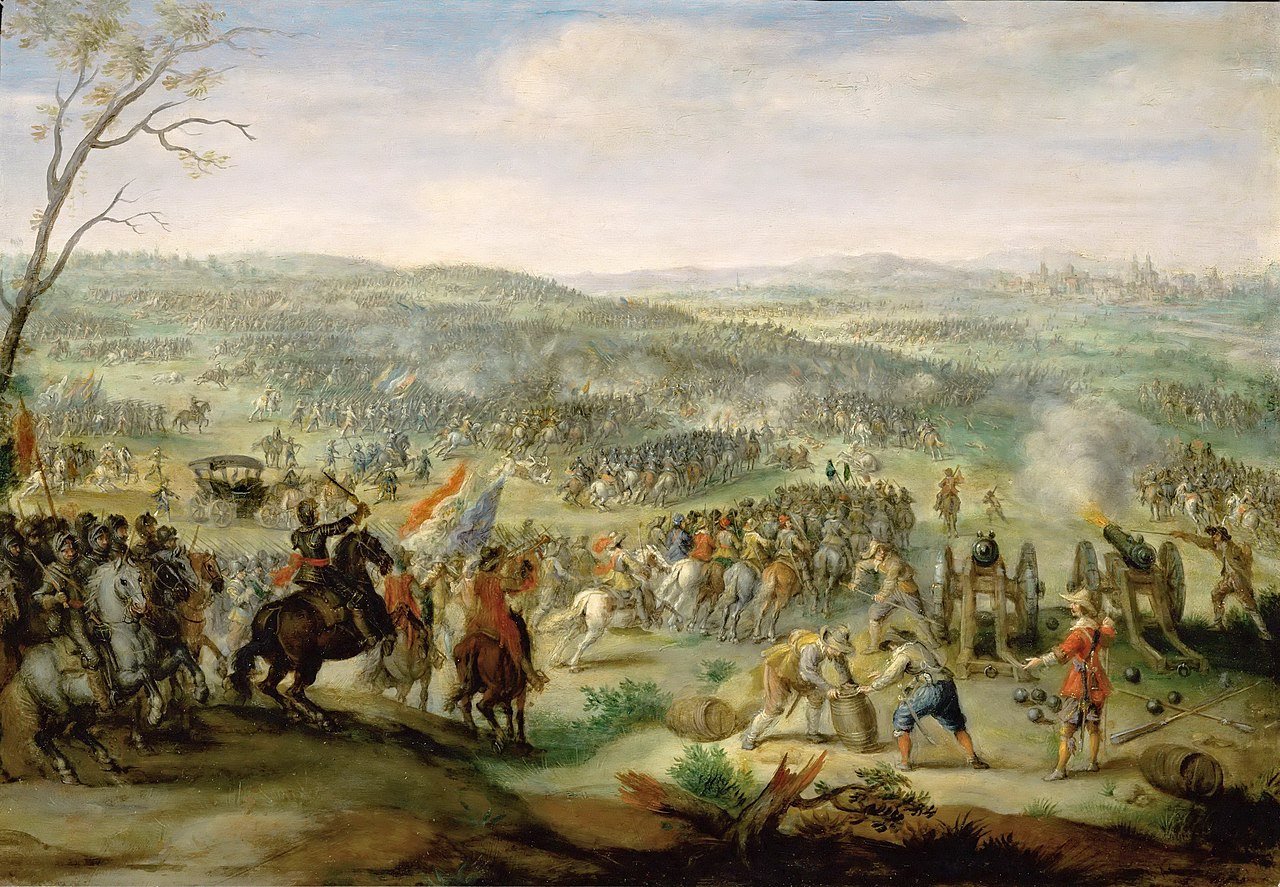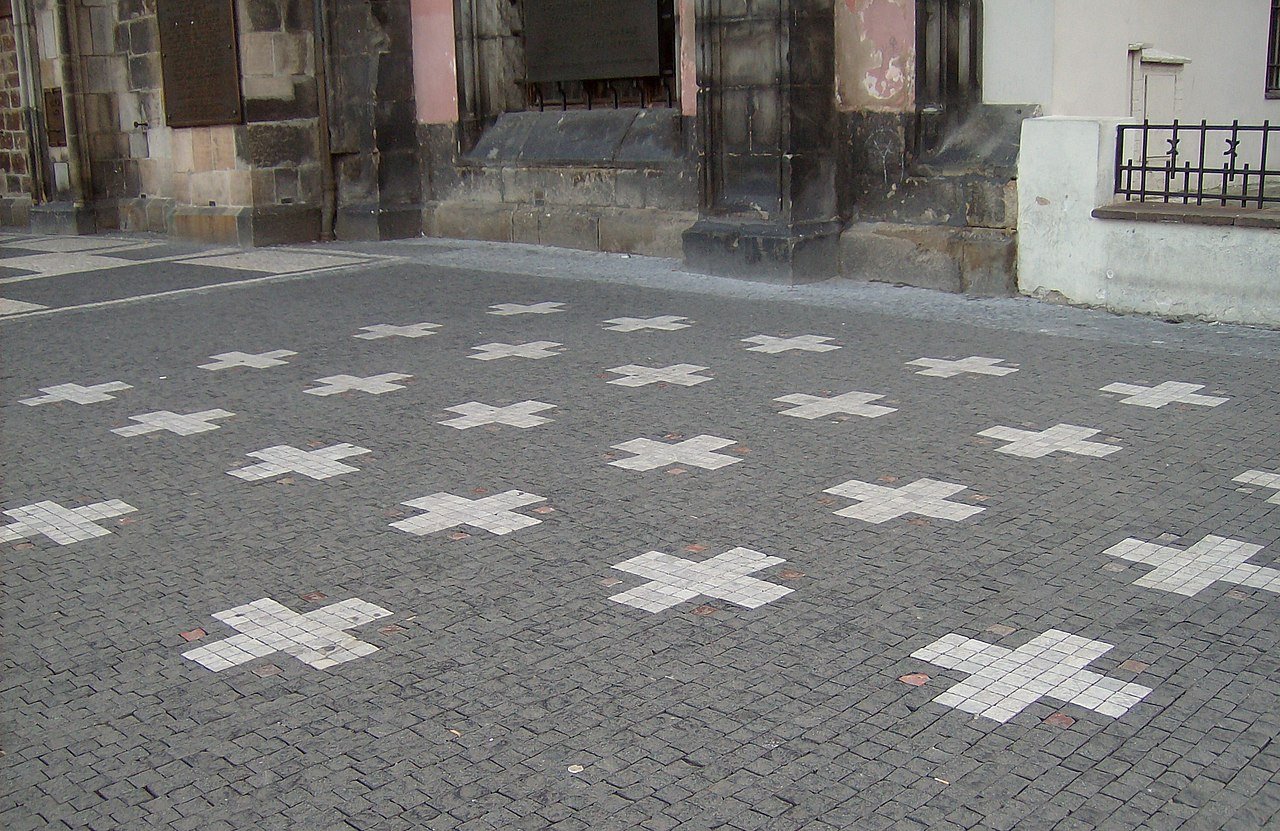Battle of White Mountain, by Peter Snayers
The Battle of White Mountain and the events that befell Bohemia in its aftermath would change the history of the Czech lands for years to come. The Count of Tilly and the Imperial Army had previously pushed through the revolts in Upper and Lower Austria and into Bohemia, where they took control of the western region, after which they marched towards Prague in order to end the Bohemian Revolt. The rebels were unable to stop them, but Christian of Anhalt, one of the military leaders on the Bohemian’s side, was able to force-march ahead of the invading army and take up a position at White Mountain. However, he was unable to set up a good defensive position before the Imperial Army arrived and the situation looked dire for all. Previous losses and the bad weather did not bode well for Bohemian morale. Neither side was particularly enthused to engage in battle, as the mercenaries fighting had not been paid in quite some time. Despite this, on November 8, 1620, the Battle of White Mountain ensued and the Bohemians lost the fateful battle. With the Bohemian army defeated, the Imperial forces entered Prague and the revolt collapsed with King Frederick fleeing the country the same year.
19th century drawing of the execution
Following the defeat of the Bohemian Revolt was the punishment for those who had been involved with it. There were different levels of punishment for those involved based on how involved they were in the revolt. The lightest of the punishments (which was just a fine) was for those who, whether Protestant or Catholic, did nothing except simply accept King Frederick as the King of Bohemia. The heavier penalty was for those who served in the revolt by providing any service or held a position of office, which would entail degradation and the confiscation of property. The final penalty, the penalty of death, was saved for the leaders of the revolt. On June 21, 1621, 27 Bohemian Revolt leaders were brought to the Old Town Square. There, with Jan Mydlář as the executioner, all 27 were executed in what was known as the Old Town Square Execution. In the Old Town Square today, there are 27 crosses that mark the pavement in their honor.
The 27 tributary crosses at Prague’s Old Town Square
The aftermath of the Bohemian Revolt was the destruction of Hussite and other Protestant faiths in Bohemia. The Holy Roman Emperor banned Protestantism in the land and forced all who resided there to conform to Catholicism or leave. This completely destabilized the economy in Bohemia. Furthermore, the Habsburgs later tightened their control of Bohemia which would last the next 300 years.
The Protestant League, too, suffered a major blow in credibility due to its inability to aid the Bohemians. Nevertheless, the conclusion of the Bohemian Revolt was not the end of things. Though Frederick was ousted as King of Bohemia, the Holy Roman Emperor wanted to further punish Frederick and remove him from the Palatinate as well. Alas, while Frederick had been the illegitimate King of Bohemia, he was in fact the de jure ruler of the Palatinate. Deposing him was seen as both unjust and a threat to the other princes –especially those in the Protestant League– and soon all hell would break loose. The Bohemian Revolt was the match that would set the Holy Roman Empire aflame with war, but this last act was the trigger to ignite the opposing powers and launch the conflict into the full-blown Thirty Years’ War and engulf all of Germany and beyond.
Thirty Years War Map of Alliances
Written by James Travis
Sources:
Agnew, Hugh. The Czechs and the Lands of the Bohemian Crown. Stanford, CA: Hoover Institute Press, 2004.
Gutmann, Myron P. “The Origins of the Thirty Years’ War.” The Journal of Interdisciplinary History 18, no. 4 (1988): 749–70. https://doi.org/10.2307/204823.
Jütte, Daniel. “Defenestration as Ritual Punishment: Windows, Power, and Political Culture in Early Modern Europe.” The Journal of Modern History 89, no. 1 (2017): 1–38. https://www.jstor.org/stable/26548390.
Monroe, Will S. Bohemia and the Cechs: The History, People, Institutions, and the Geography of the Kingdom. London: Forgotten Books, 2012.
Palmitessa, James R. “The Prague Uprising of 1611: Property, Politics, and Catholic Renewal in the Early Years of Habsburg Rule.” Central European History 31, no. 4 (1998): 299–328. http://www.jstor.org/stable/4546814.
Panek, Jaroslave and Oldrich Tuma. A History of the Czech Lands. 2nd ed. Prague: Charles University Karolinum Press, 2020.
Werstadt, Jaroslav. “The Philosophy of Czech History.” The Slavonic Review 3, no. 9 (1925): 533–46. http://www.jstor.org/stable/4201887.




